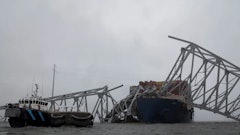A builder's risk property policy is crucial because of the unique risk exposures of property under construction. Designed to cover property damage to buildings under construction, it offers broad coverage for materials, supplies (including modular structural components intended to become part of the building or that you may be responsible for) fences, scaffolding, construction forms and signs at the premises. The policy covers losses caused by fire, windstorms, collapse and other specified risks.
Most builders' risk policies are separately written from other property and/or general liability policies. That's because specialized underwriting is required. Additionally, many standard property policies now only cover completed structures. They may not cover additions under construction, alterations and repairs to the building or structures or new buildings.
Some standard property policies do provide some coverage for buildings under construction. A coverage extension, if provided by the policy, covers new buildings while being built on the already insured premises. It's generally subject to a sub-limit (typically $1 million) and time limitation (anywhere from 60 to 180 days). Materials, supplies, machinery, fixtures, and equipment that you may be installing, constructing or rigging as part of your installation or construction project (or that will become a permanent part of your installation or construction project while they are at a storage location away from described premises), may or may not be covered under the property policy.
A standard policy may not cover property located outside of a building. Damage to property exposed to rain, snow, ice or sleet or personal property left in the open may not be covered. Collapse as an originating cause of loss or weight of people or personal property may not be covered.
Because of these limitations in standard policies and the many risks involved in construction projects, general contractors and/or developers normally need separate builder's risk and general liability insurance policies. Occasionally, an owner's contractor's protective liability (OCP) insurance may also be required, depending on circumstances of the job.
Determining the correct property-damage limits for "hard" construction costs is fairly straightforward. You can calculate it by simply adding up all the proposed materials, supplies, delivery, removal and labor costs used in the actual construction project. After that, add in "soft" costs like permits and architects' and engineers' fees.
If you're a developer, your general contractor's liability policy should insure your company, too. Require your general contractor to provide you with OCP policy that names your company and/or property owner as the "insured" during construction. (Similarly, the general contractor should require subcontractors' policies to name it as the "insured.") For example, if the contractor drops a beam on a Rolls Royce and your company is named in a suit for damages, this policy will apply to it, and general contractor's exposure on its own general liability policy would be minimal if any. And if the claim is so big that it exceeds the contractor's liability coverage, then your OCP policy may kick in with additional protection on your behalf.
Some projects are large enough to qualify for a wrap program that considers the project as a single entity. The wrap program covers the developer and contractors as one group, wrapping in workers' compensation, general liability and umbrella liability around the combined entities. This provides ease of administration and cost control.
With most projects, insuring the finished value of the project is simplest. However, an insure-as-you-go plan can sometimes save money. This involves insurance to cover the value of the project completed to that date. You have to file timely reports on increases in value. However, the modest potential cost savings may not be worth the extra work and potential risk involved.
Terrorism insurance may not be needed. Since terrorists want to cause both death and destruction, they are attracted to occupied buildings.
Marjorie Young is senior vice president of E.G. Bowman Company, a full-service commercial lines insurance brokerage in New York City experienced in serving the construction industry. She can be reached at [email protected] or (212) 425-8150.




























